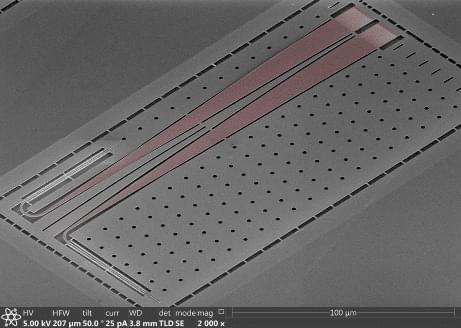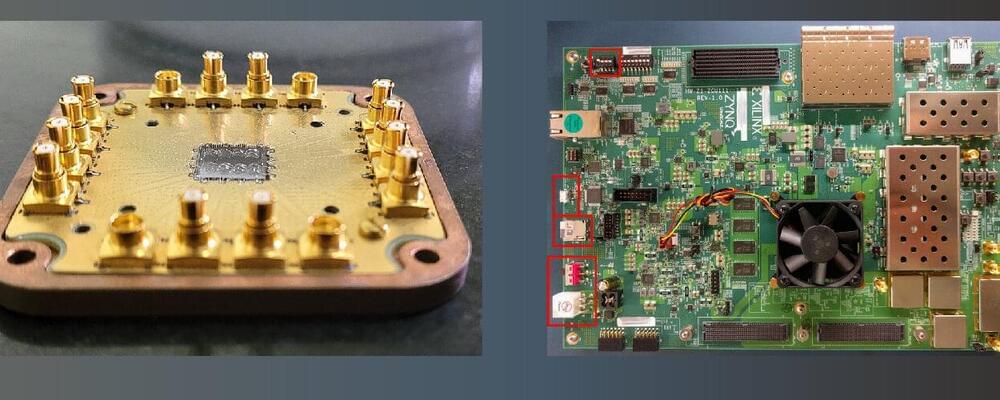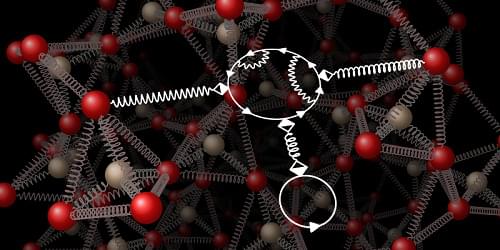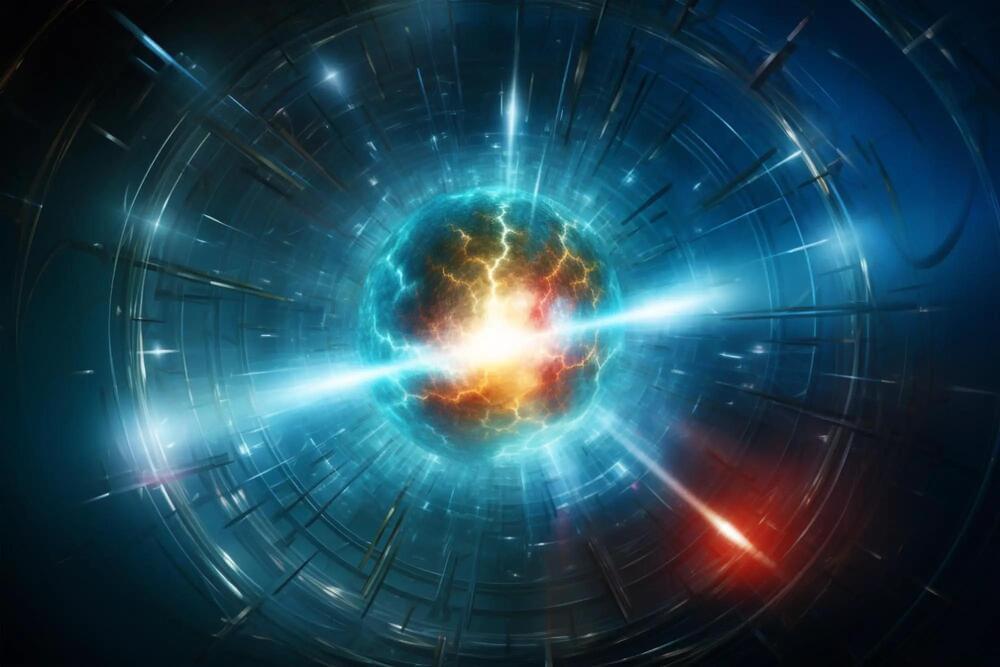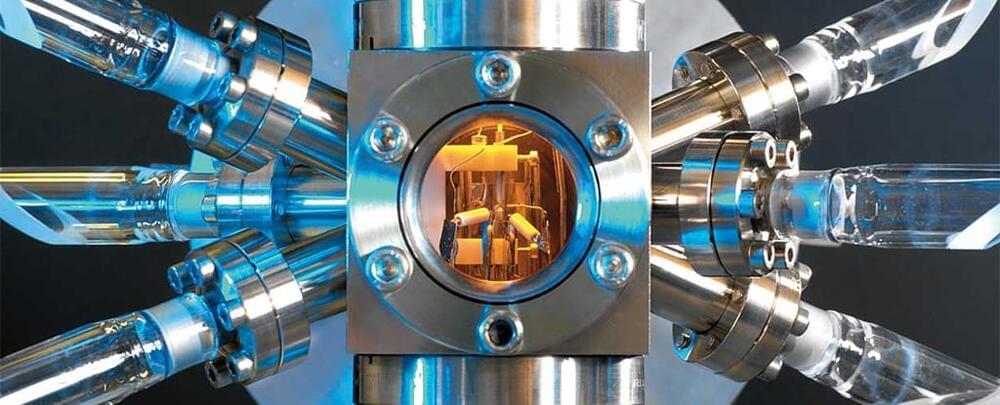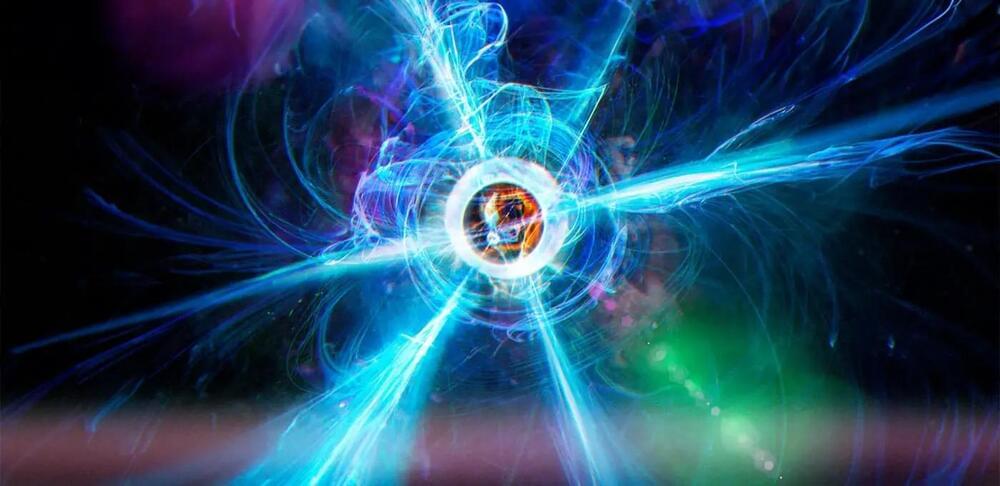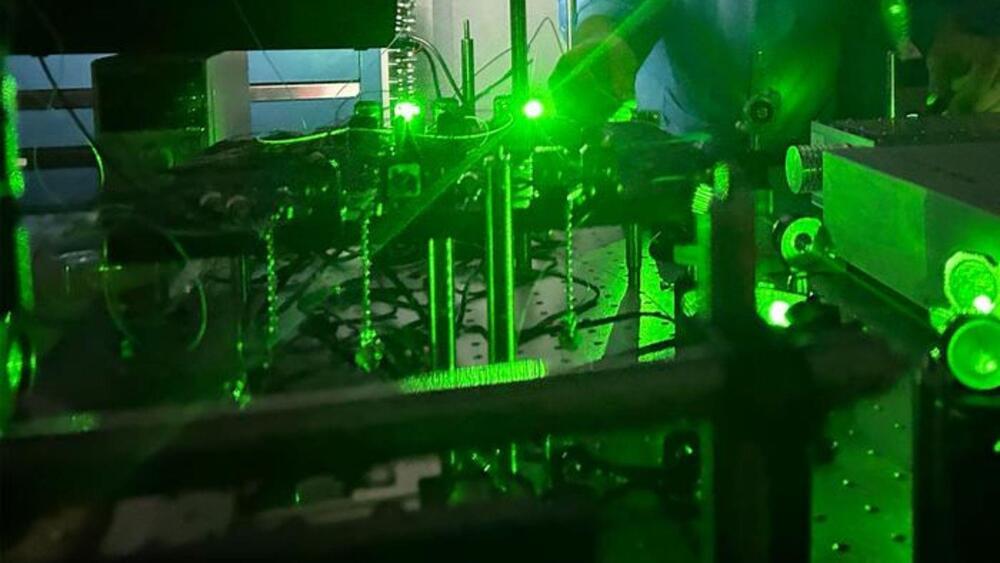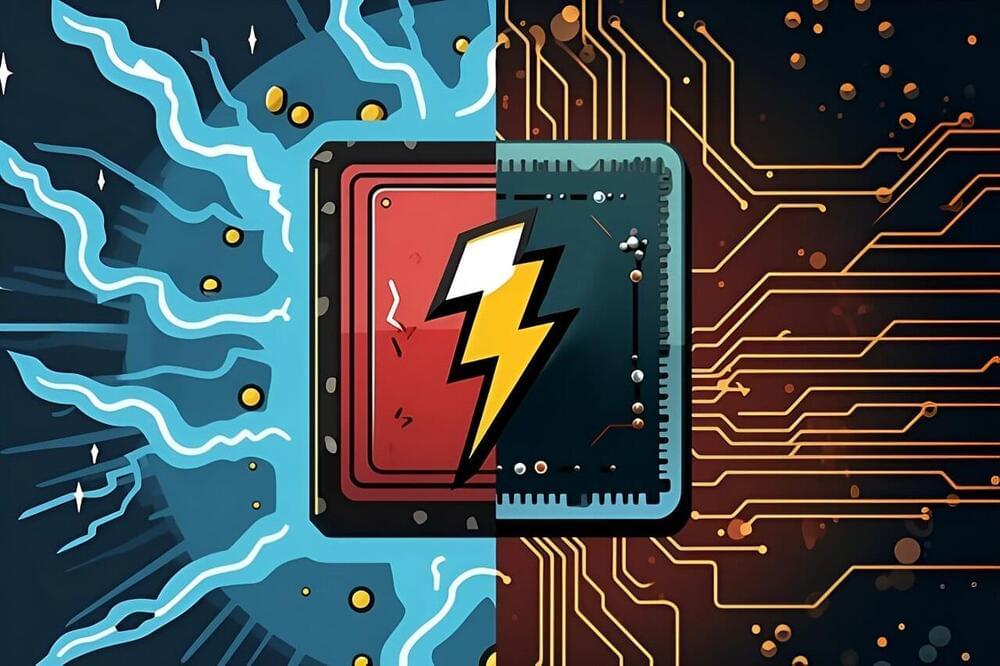Archive for the ‘particle physics’ category: Page 144
Sep 15, 2023
Scientists Discover “Demon” Particle
Posted by Dan Breeden in categories: materials, particle physics
Right in time for spooky season, scientists have discovered the existence of something called the “demon” particle. While the name of the material may strike terror in some, its discovery is actually far less sinister. Hidden from researchers for over seven decades, the “composite” of electrons was recently discovered according to a new study published in Nature.
“Demons have been theoretically conjectured for a long time, but experimentalists never studied them,” paper senior author Peter Abbamonte said in the study. “In fact, we weren’t even looking for it. But it turned out we were doing exactly the right thing, and we found it.”
Sep 14, 2023
A scalable and user-friendly platform for physicists to carry out advanced quantum experiments, cheaply
Posted by Paul Battista in categories: computing, particle physics, quantum physics
Quantum computers can solve certain computational problems much faster than ordinary computers by using specific quantum properties. The basic building blocks of such machines are called quantum-bits or qubits. Qubits can be realized using several physical platforms such as nuclear spins, trapped ions, cold atoms, photons, and using superconducting Josephson circuits.
Several such qubits operate in the microwave frequency domain, and require specialized room temperature microwave electronics for control and readout of the quantum states of the qubits. However, there lies a challenge when it comes to connecting classical electronics to these qubits. The qubits need high frequency (GHz) electromagnetic signals for control and readout pulses in the order of a few tens of nanoseconds.
The traditional setup for generation and capture of such signals is often costly and complex with many components. This can be addressed by developing a specific FPGA-based system that brings the functionality of all the traditional equipment on to a single board. However, with such developments, three main challenges need to be kept in mind: generation and capture of the high-fidelity microwave signals, scalability, and a user-friendly interface.
Sep 14, 2023
Toward a Complete Theory of Crystal Vibrations
Posted by Dan Breeden in categories: computing, information science, mathematics, particle physics
A new set of equations captures the dynamical interplay of electrons and vibrations in crystals and forms a basis for computational studies.
Although a crystal is a highly ordered structure, it is never at rest: its atoms are constantly vibrating about their equilibrium positions—even down to zero temperature. Such vibrations are called phonons, and their interaction with the electrons that hold the crystal together is partly responsible for the crystal’s optical properties, its ability to conduct heat or electricity, and even its vanishing electrical resistance if it is superconducting. Predicting, or at least understanding, such properties requires an accurate description of the interplay of electrons and phonons. This task is formidable given that the electronic problem alone—assuming that the atomic nuclei stand still—is already challenging and lacks an exact solution. Now, based on a long series of earlier milestones, Gianluca Stefanucci of the Tor Vergata University of Rome and colleagues have made an important step toward a complete theory of electrons and phonons [1].
At a low level of theory, the electron–phonon problem is easily formulated. First, one considers an arrangement of massive point charges representing electrons and atomic nuclei. Second, one lets these charges evolve under Coulomb’s law and the Schrödinger equation, possibly introducing some perturbation from time to time. The mathematical representation of the energy of such a system, consisting of kinetic and interaction terms, is the system’s Hamiltonian. However, knowing the exact theory is not enough because the corresponding equations are only formally simple. In practice, they are far too complex—not least owing to the huge number of particles involved—so that approximations are needed. Hence, at a high level, a workable theory should provide the means to make reasonable approximations yielding equations that can be solved on today’s computers.
Sep 13, 2023
Einstein’s most famous equation has been used to make matter from light particles
Posted by Shailesh Prasad in categories: information science, particle physics
According to Einstein’s theory of special relativity, first published in 1905, light can be converted into matter when two light particles collide with intense force. But, try as they might, scientists have never been able to do this. No one could create the conditions needed to transform light into matter — until now.
Physicists claim to have generated matter from pure light for the first time — a spectacular display of Einstein’s most famous equation.
This is a significant breakthrough, overcoming a theoretical barrier that seemed impossible only a few decades ago.
Sep 13, 2023
Decoding the Universe’s Ghost: Project 8 Is Closing In on the Elusive Neutrino
Posted by Paul Battista in categories: evolution, particle physics
The humble neutrino, an elusive subatomic particle that passes effortlessly through normal matter, plays an outsized role among the particles that comprise our universe. To fully explain how our universe came to be, we need to know its mass. But, like so many of us, it avoids being weighed.
Now, an international team of researchers from the United States and Germany leading an ambitious quest called Project 8 reports that their distinctive strategy is a realistic contender to be the first to measure the neutrino mass. Once fully scaled up, Project 8 could help reveal how neutrinos influenced the early evolution of the universe as we know it.
In 2022, the KATRIN research team set an upper bound for how heavy the neutrino could possibly be. That milestone was a tour-de-force accomplishment that has been decades in the making. But these results simply narrow the search window. KATRIN will soon reach and may one day even exceed its targeted detection limits, but the featherweight neutrino might be lighter still, begging the question: “What’s next?”
Sep 13, 2023
Atomic Clocks Could Finally Reveal Dark Matter, Study Suggests
Posted by Shailesh Prasad in categories: cosmology, particle physics
Atomic clocks are the most accurate timekeeping instruments we have. A new study proposes a way to use the instruments’ mind-blowing level of precision to detect the tiniest of energy fluctuations, potentially giving scientists a way to observe some types of dark matter.
Dark matter continues to prove elusive: though we haven’t observed it directly, we can see its effects on the Universe. Frustratingly, there is nothing in our current models of physics to explain what we see.
Here, researchers from the University of Sussex and the National Physical Laboratory in the UK have suggested using atomic clocks to detect certain low-mass particles theorized to potentially make up this mysterious material.
Sep 13, 2023
Down the Quantum Rabbit Hole: “Alice Ring” Discovery Offers Glimpse Into Other-Worldly Realm
Posted by Paul Battista in categories: particle physics, quantum physics
Experiments promote a curious flipside of decaying monopoles: a reality where particle physics is quite literally turned on its head.
The field of quantum physics is rife with paths leading to tantalizing new areas of study, but one rabbit hole offers a unique vantage point into a world where particles behave differently—through the proverbial looking glass.
Dubbed the “Alice ring” after Lewis Carroll’s world-renowned stories on Alice’s Adventures in Wonderland, the appearance of this object verifies a decades-old theory on how monopoles decay. Specifically, that they decay into a ring-like vortex, where any other monopoles passing through its center are flipped into their opposite magnetic charges.
Sep 12, 2023
Precise control of qubits using new quantum computing method
Posted by Gemechu Taye in categories: computing, particle physics, quantum physics
Instead of designing their own qubits for study, the team used nature-made ones and focused on ways to control them.
Researchers at the University of Waterloo in Canada have developed a novel and robust way to control individual qubits. This ability is a crucial step as humanity attempts to scale up its computational capacities using quantum computing, a press release said.
Much like silicon-based computers use bits as the basic unit of storing information, quantum computers use quantum bits or qubits. A number of elemental particles, such as electrons and photons, have been used to serve this purpose, wherein the charge or polarization of the light is used to denote the 0 or 1 state of the qubit.
Sep 11, 2023
System combines light and electrons to unlock faster, greener computing
Posted by Jose Ruben Rodriguez Fuentes in categories: particle physics, robotics/AI
Computing is at an inflection point. Moore’s Law, which predicts that the number of transistors on an electronic chip will double about every two years, is slowing down due to the physical limits of fitting more transistors on affordable microchips. Increases in computer power are slowing down as the demand grows for high-performance computers that can support increasingly complex artificial intelligence models.
This inconvenience has led engineers to explore new methods for expanding the computational capabilities of their machines, but a solution remains unclear.
Photonic computing is one potential remedy for the growing computational demands of machine-learning models. Instead of using transistors and wires, these systems utilize photons (microscopic light particles) to perform computation operations in the analog domain.
